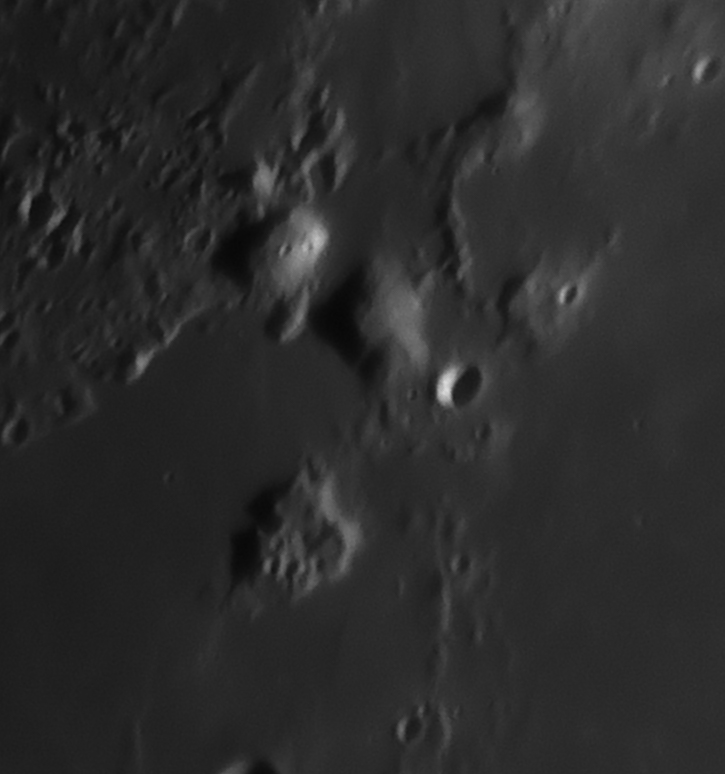
Conditions: beautiful spring evening, no wind, no clouds, haze below average, warm.
Setup: Obsession 18" f4.5 Dobsonian telescope with 4x Televue powermate, red filter, Lumenera Skynyx 2-2M camera (image scale 0.1 arcsec/pixel). (image)
Acquisition: 5000 12-bit images were captured at 13 frames pr. second. Exposure time was 20 msec with the gain set to 5.
The Gruithuisen domes are prime candidates for volcanic features on the Moon. Hold the your mouse over the image to get the Gamma and Delta domes pointed out. Gamma has a 1.3 kilometer wide crate right at its peak - could this be of volcanic origin as well or is it just a well placed impact crater? Most lunar domes have very low slopes with smooth transitions into the surrounding terrain. That is not so here, indicating that the domes consist of a lava with a higher viscosity. On Gamma you might sense from changes in the shadows across the dome that abrupt changes in slope occur in several paces. This is a real effect - it has also been seen on much higher resolution views from orbiting spacecraft. I'm no geologist but I wonder if something can be deduced from this?
This image was created by first correcting erratic tracking errors with homemade software, then using Registax v. 5 for multipoint alignment. The best 60 images were stacked and a mild wavelet filter was applied to the stacked result. Reduced noise and tweaked levels and curves in Photoshop. Seeing this evening was not great and the lunar altitude was just 30 degrees - still I get resolution in the final image of around 0.3 arcseconds.
Here's my main page where you can see more of the pictures I have taken so far.
Comments greatly appreciated! (mikael@leif.org)